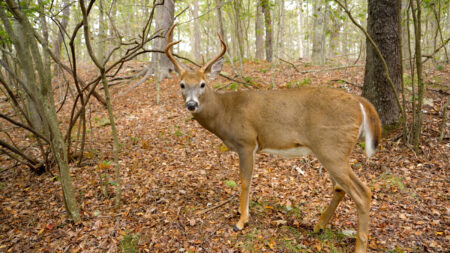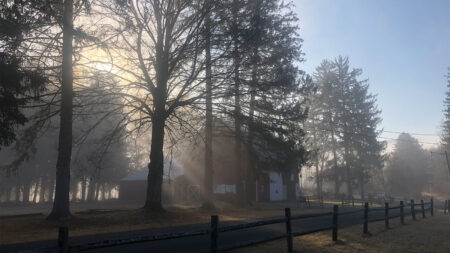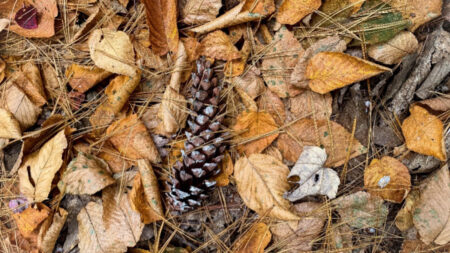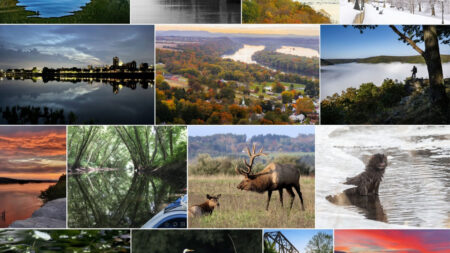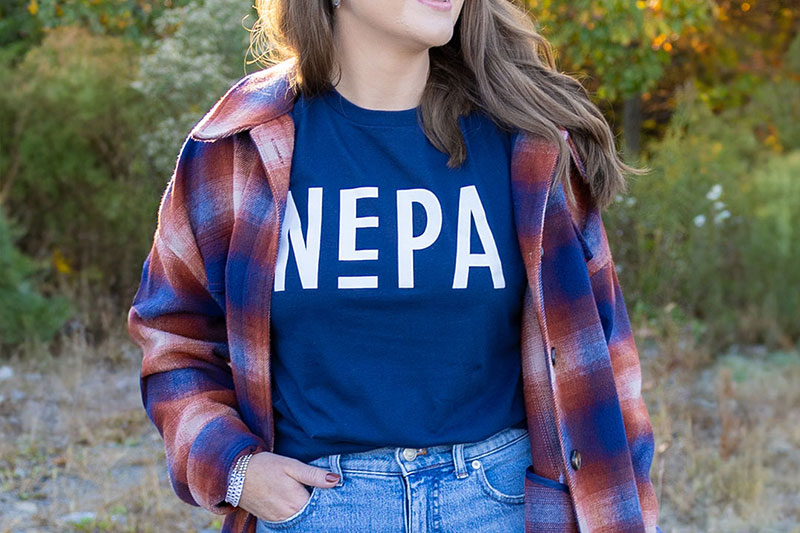The Susquehanna River has Drawn People to its Banks for Thousands of Years
Many of our Susquehanna Greenway River Towns and NEPA communities were built where former Native American villages once maintained extensive agricultural fields, towns, and roads along the easily navigable shores of the Susquehanna River. Acknowledging the importance of Indigenous people in Pennsylvania’s past, present, and future is key to understanding and respecting the Susquehanna Greenway that we explore today.
Many familiar names throughout the Susquehanna Greenway have their roots in Native languages. In the Northern regions of the Susquehanna River, most Indigenous people spoke variations of the Haudenosaunee language – including Mohawk and Oneida – while those in the central and southern regions largely spoke Algonquian dialects.
Let’s learn about just a few of these parks, trails, and landmarks with key ties to Indigenous history. Remember, many of the paths we walk today have been walked for thousands of years.
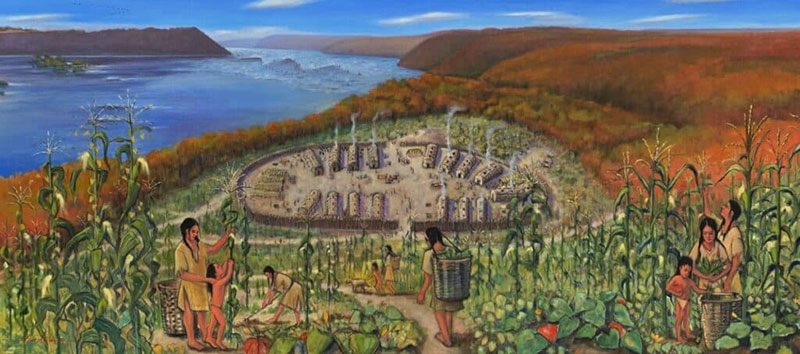
Catawissa, PA
Catawissa, a borough in Columbia County that sits upon the banks of the Susquehanna, derives its name from the Indigenous word “Catawese.” Authorities differ as to the nationality of the aboriginal tribe which made their home in the area. Redmond Conyngham, a prominent settler in the area at the time (and after whom Conyngham Township is named) stated that “The Piscatawese, or Gangawese, or Conoys had a wigwam…at Catawese, now Catawissa.” Stewart Pearce, another renowned area historian of that time, asserts that the Shawanese tribe established a village at Catawissa in 1697, or about that time. Regardless, the word “Catawese” occurs in several different indigenous dialects, including the Shawanese and Delawares, and always with the same meaning: “pure water.”
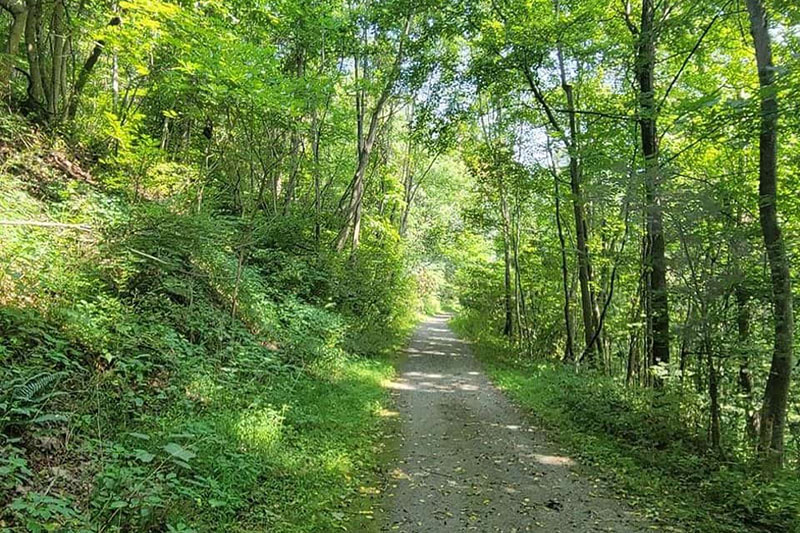
The Iroquois Trail
The Iroquois Trail is a 3-mile trail located near the town of Tunkhannock, another town with rich Indigenous history. Although the name Iroquois is still widely used today, it is actually a derogatory term that the French used to refer to the Haudenosaunee people. The term is a mispronunciation of the Algonquian word for “snakes”—an insult used originally by the Algonquians, who engaged in continued conflict with the Haudenosaunee.
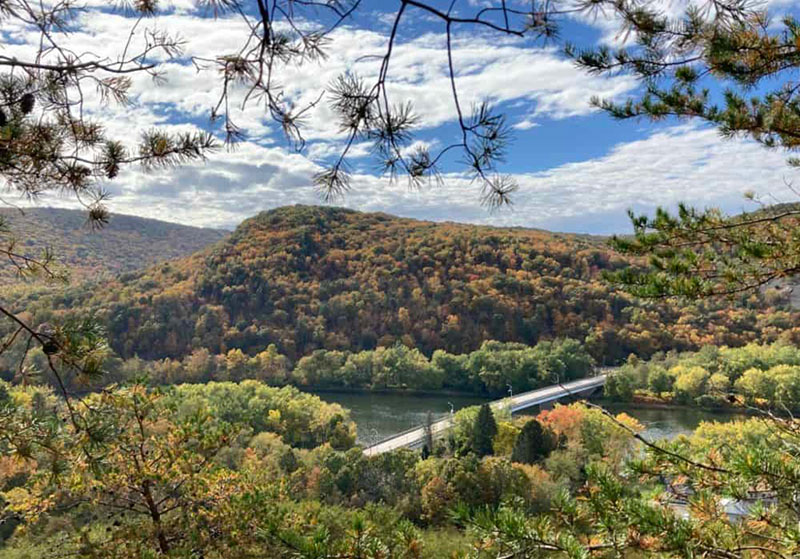
The Mocanaqua Trail
The Mocanaqua Trail is a popular trail in the coal country region of the Susquehanna River. Mocanaqua’s name derivation is a reminder of Frances Slocum, who was kidnapped by three Delaware warriors in an attack on the Slocum family farm in nearby Wilkes Barre. Not only is this story the origin of Frances Slocum State Park, but it also has ties to the name “Mocanaqua.”
Little Frances, who was only five years old at the time of her abduction, was brought westward and eventually traded for animal pelts to a childless couple in the Miami tribe who named her “Maconaquah,” or Young Bear. As Maconaquah grew older, she became a celebrity of sorts within the native community. She was known not only for her light skin and flaming red hair, but also for excelling at the foot races and games on horseback often played by young braves. Ultimately, she married a Miami tribe leader in Indiana and lived there until her death in 1847 at the age of 74.
Nescopeck, PA
The borough of Nescopeck, just across the Susquehanna River from Berwick, derives its name from a creek of the same name that flows south from the river on the edge of town. “Nescopeck” comes from a Lenni Lenape (Delaware tribe) word meaning “deep black water.” The current community of Nescopeck occupies the original site of the Delaware tribe’s village.
Shickshinny, PA
(North Branch) Conflicting interpretations state that Shickshinny, a Susquehanna River Greenway town, means either “a fine stream” or “five mountains.” Either name would suit this SGP River Town, which is situated along a small creek and ringed by five mountains.

The Susquehanna River
The Susquehanna River is named for the Susquehannock people who inhabited the Susquehanna River Valley and surrounding areas at the time of European contact. Variations on the suffix “hannock” are commonly found throughout the Susquehanna Greenway—its meaning in the Algonquian language is “moving water” or “river.” Sources conflict on the full meaning of Susquehanna, with interpretations ranging from “oyster river” to “muddy river.”

Tunkhannock, PA
The name of the SGP River Town of Tunkhannock has various interpretations; some maintain that it signifies “small stream,” while others have traced it to mean “a bend in the river,” referring to a sharp oxbow bend known as “the Neck” or “The Vosburg Neck,” which is now a state park.
Wapwallopen, PA
Another community on the North Branch, Wapwallopen, has two potential indigenous name origins. The first being, “the place where the messengers were murdered,” though no reference has yet been found as to the reason for this translation. Any reason for that meaning is most likely lost in history. The other meaning is given as, “the place where the white hemp grows.” This translation seems more likely, since in the Delaware language, the prefix Wab, Wapsu, and Whap, translated into English, all mean white. And “halahpink” can be translated to mean “wild hemp.” It is definitely known that a kind of wild hemp did grow in the area. From this plant, fish nets, coarse clothing, and bedcoverings were made by the Delaware.
Indigenous Voices are Essential to Understanding Our Relationship with the Land
When visiting one of these spots along the Susquehanna Greenway, take some time to consider its importance to the Haudenosaunee, Susquehannock, Nanticoke, and others who previously called it home. While the Susquehannock people are no longer active in the area, the Haudenosaunee Confederacy is an important force in the Northeast today. For more information, visit their website at haudenosauneeconfederacy.com.



